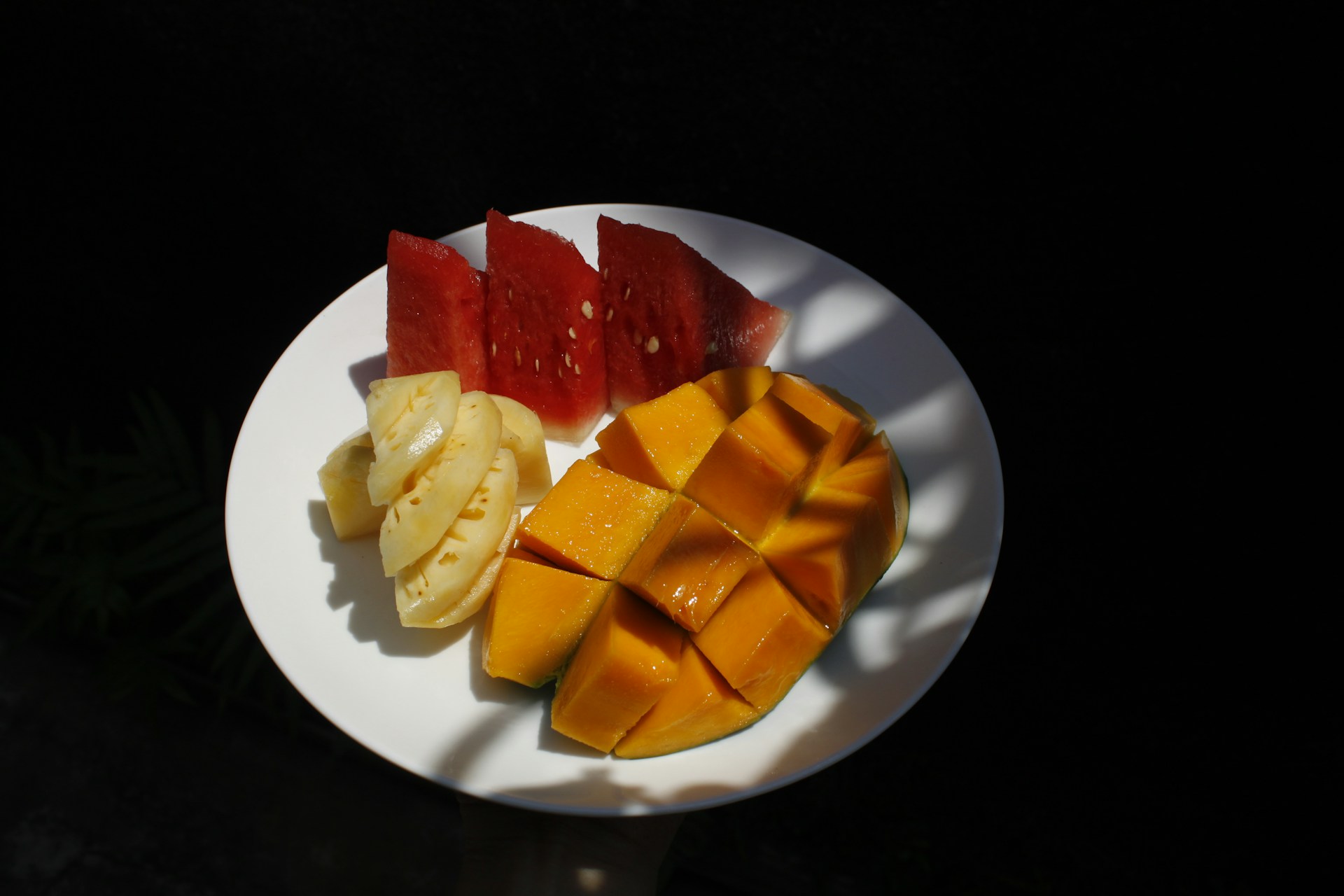Status Besi dan Kualitas Diet pada Wanita Usia Subur Pranikah Obesitas di Kota Semarang
Downloads
Background: Women of reproductive age are potentially to have double-burden malnutrition due to poor diet quality. Obesity-related anemia affects iron homeostasis (hypoferremia) through low-grade inflammation.
Objectives: This study aimed to analyze the differences of iron status among women of reproductive age based on obesity status and diet quality based on iron and obesity status.
Methods: A cross-sectional study of female students, aged 18-22 years old that classified as obese (n=25) and non-obese (n=25). Subjects were selected by proportional random sampling. This study used iron status and diet quality as variable datas. Blood samples were taken to determined iron status (Fe serum). Diet quality was analyzed by SQ-FFQ and DQI-I. Statistical analysis using Independent-T Test, One-way ANOVA, Kruskal Wallis, Mann Whitney tests.
Results:There were 20% of obese subjects had low iron status and majority (94%) had low diet quality score (52.04±5.2). Iron status of obese women (83.9±20.7 µg/dl) significantly differed to non-obese women (99.2±26.1 µg/dl), p=0.027. Obese group with low iron status had lower diet quality and moderation component score, however adequacy score was higher than other groups, p<0.05. There were no significant differences in variation and overall balance among all groups, p>0.05.
Conclusions: Iron status of obese women was significantly different than non-obese women. Obese group with low iron status had lower diet quality and moderation component score, however adequacy score was higher than other groups
ABSTRAK
Latar Belakang:Wanita Usia Subur (WUS) rentan terkena masalah gizi ganda akibat kualitas diet yang buruk. Obesitas terkait anemia disebabkan inflamasi tingkat rendah yang mempengaruhi homeostasis zat besi (hipoferrimia).
Tujuan:Penelitian ini bertujuan untuk menganalisis perbedaan status besi WUS berdasarkan status obesitas, dan perbedaan kualitas diet berdasarkan status besi dan obesitas.
Metode:Penelitian ini menggunakan desain cross-sectional, dengan subjek mahasiswi berjumlah 25 orang obesitas dan 25 orang non-obesitas, dipilih menggunakan teknik proportional random sampling. Data yang diambil berupa status besi (kadar Fe serum) melalui pengambilan sampel darah, dan kualitas diet menggunakan wawancara SQ-FFQ dan analisis DQI-I. Analisis menggunakan uji Independent-T Test, One-way ANOVA, Kruskal Wallis, dan Mann Whitney.
Hasil:Sebanyak 20% WUS obesitas memiliki status besi rendah dan mayoritas subjek (94%) memiliki kualitas diet rendah (52,04±5,2). Status besi WUS obesitas (83,9±20,7µg/dl) berbeda signifikan dibandingkan WUS non-obesitas (99,2±26,1µg/dl), p=0,027. Kelompok WUS obesitas dengan status besi rendah memiliki skor kualitas diet dan komponen moderasi lebih rendah, namun memiliki skor kecukupan lebih tinggi dibandingkan kelompok lainnya, p<0,05. Komponen variasi dan keseimbangan keseluruhan pada semua kelompok tidak menunjukkan perbedaan signifikan, p>0,05.
Kesimpulan:Status besi WUS obesitas signifikan lebih rendah dibandingkan WUS non-obesitas. Kelompok WUS obesitas dengan status besi rendah memiliki skor kualitas diet dan moderasi lebih rendah, namun memiliki skor kecukupan lebih tinggi dibandingkan kelompok lainnya.
Keputusan Sekretaris Jenderal Kementerian Kesehatan Nomor HK.03.01/VI/432/2010 tentang Data Sasaran Program Kementerian Kesehatan Tahun 2010. Hal 4.
Shapira, Niva. Prenatal Nutrition: A Critical Window of Opportunity for Mother and Child. Journal of Women's Health. 2008; 4(6): 639–656.
Indonesia Health Sector Review. Indonesia: Menghadapi Beban Ganda Malnutrisi. [Online]. Available in: www.worldbank.org. Millenium Challenge Corporation; 2012. [Diakses pada: Mei 2018]
Mark A. Hanson, Anne Bardsley, Luz Maria De-Regil, Sophie E. Moore, Emily Okene, Lucilla P, et al. The International Federation of Gynecology and Obstetrics (FIGO) recommendations on adolescent, preconception, and maternal nutrition: "Think Nutrition First”#. International Journal of Gynecology and Obstetrics. 2015; 131(S4): S213–S253.
Hill JO, Wyatt HR, Peters JC. Energy Balance and Obesity. Journal of Circulation. 2012; 126(1): 126–132.
Kemenkes RI. Riset Kesehatan Dasar. Badan Penelitian dan Pengembangan Kesehatan. Jakarta: Kementerian Kesehatan RI; 2013. Hal 225.
Kemenkes RI. Laporan Hasil Riset Kesehatan Dasar Provinsi Jawa Tengah Tahun 2009. Badan Penelitian dan Pengembangan Kesehatan. Kementerian Kesehatan RI; 2009. Hal 50.
Kemenkes RI. Riset Kesehatan Dasar. Badan Penelitian dan Pengembangan Kesehatan. Jakarta: Kementerian Kesehatan RI; 2013. Hal 256.
Jian Wang, Kostas Pantopoulos. Regulation of cellular iron metabolism. A Review Article: Biochemical Journal. 2011; 434(3): 365-381.
Milman N. Anemia – still a major health problem in many parts of the world!. Ann Hematol. 2011; 90(4): 369-377.
Ana C Cepeda-Lopez, Saskia JM Osendarp, Alida Melse-Boonstra, Isabelle Aeberli, Francisco Gonzalez-Salazar, Edith Feskens, et al. Sharply higher rates of iron deficiency in obese Mexican women and children are predicted by obesity-related inflammation rather than by differences in dietary iron intake. The American Journal of Clinical Nutrition. 2011; 93(5): 975-983.
Ganz T, Nemeth E. Hepcidin and Iron homeostasis. A Review Article. Biochim Biophys Acta. 2012; 1823(9): 1434–1443.
Cheng HL, Bryant CE, Rooney KB, Steinbeck KS, Griffin HJ, Petocz P, et al. Iron, hepcidin and inflammatory status of young healthy overweight and obese women in Australia. PLOS One. 2013; 8(7): e68675.
Kordas K, Fonseca Centeno ZY, Pachón H, Jimenez Soto AZ. Being overweight or obese is associated with lower prevalence of anemia among Colombian women of reproductive age. J Nutr. 2013; 143(2): 175-181.
Lisa M Bodnar, Anna Maria Siega-Riz, and Mary E. Cogswell. High Prepregnancy BMI increases the Risk of Postpartum Anemia. Obesity Research. 2004; 12(6): 941-948.
Esma Altunoğlu, Cüneyt M, Füsun E, Ender Ü, M. Cem. The Impact of Obesity and Insulin Resistance on Iron and Red Blood Cell Parameters: A Single Center, Cross-Sectional Study. Turk J Hematol. 2014; 31(1): 61-67.
Rachel M B, Juan S L, and Parminder S S. Identification, Prevention and Treatment of Iron Deficiency during the First 1000 Days. A Review Article: Nutrients. 2014; 6(10): 4093-4114.
Ursula Viana Bagnia, Ronir Raggio Luiz, Gloria Valeria da Veiga. Overweight is associated with low hemoglobin levels in adolescent girls. Obesity Research & Clinical Practice. 2013; 7(3): e218-e229.
Leigh Peele. Body Fat Percentage: The Complete Guide To Evaluation and Measurement; 2010. Hal 6.
Ajeng Amalia, Agustyas Tjiptaningrum. Diagnosis dan Tatalaksana Anemia Defisiensi Besi. Majority. 2016; 5(5): 166-169.
World Health Organization, Centers for Disease Control and Prevention. Assessing the Iron Status of Population: including literature reviews. 2nd ed. Geneva: 2007, page 87.
Gil Á, de Victoria EM, Olza J. Indicators for the Evaluation of Diet Quality. Nutr Hosp. 2015; 31(Suppl. 3): 128–144.
Kemenkes RI. Peraturan Menteri Kesehatan Republik Indonesia Nomor 75 Tahun tang Angka kecukupan gizi yang dianjurkan bagi bangsa Indonesia. Jakarta: Kementerian Kesehatan; 2013. Hal 1-3.
Ya-Fang H, Teck-Siang T, Chin-Li L, Hsing-Ching K, Min-Yu C, Solomon Chih-C. Relationship Between being Overweight and Iron Deficiency in Adolescents. Pediatrics and Neonatology. 2015; 56(6), 386-392.
De Domenico I, Zhang TY, Koening CL, Branch RW, London N, Lo E, et al.
Hepcidin mediates transcriptional changes that modulate acute cytokine-induced inflammatory response in mice. J Clin Invest. 2010; 120(7): 2395-2405.
Hira Khan. Effect of Diet Quality on Academic Achievement Among Female College Students. Progress in Nutrition. 2017; 19(3): 272-279.
Nozomi Kuriyama, Kentaro Murakami, M. Barbara E. L, Hitomi Okubo, Satomi Kobayashi, Hitomi Suga. Development of a food-based diet quality score for Japanese: associations of the score with nutrient intakes in young, middle-aged and older Japanese women. J Nutr Sci. 2016; 5: e41.
Wolongevicz DM, Zhu L, Pencina MJ, Kimokoti RW, Newby PK, D'Agostino RB, et al. Diet quality and obesity in women: the Framingham Nutrition Studies. Br J Nutr. 2010; 103(8): 1223–1229.
Agne`s Gartner, Jalila El Ati, Pierre Traissac, Abdellatif Bour, Jacques Berger, Edwige Landais, et al. A Double Burden of Overall or Central Adiposity and Anemia or Iron Deficiency Is Prevalent but with Little Socioeconomic Patterning among Moroccan and Tunisian Urban Women. J Nutr. 2014; 144(1): 87–97.
Adela Hruby, Jo Ann E. Manson, Lu Qi, Vasanti S. Malik, Eric B. Rimm, Qi Sun, et al. Determinants and Consequences of Obesity. Am J Public Health. 2016; 106(9): 1656-1662.
Manios Y, Moschonis G, Chrousos GP, Lionis C, Mougios V, Kantilafti M, et al. The double burden of obesity and iron deficiency on children and adolescents in Greece: The Healthy Growth Study. J Hum Nutr Diet. 2013; 26(5): 470-478.
Lisa M. Tussing-Humphreys, Huifang Liang, Elizabeta Nemeth, Sally Freels, Carol A. Braunschweig. Excess Adiposity, Inflammation, and Iron-Deficiency In Female Adolescents. Journal of The American Dietetic Association. 2009; 109(2): 297-302.
Alicia R. Folgueras, Sandra Freitas-Rodríguez, Andrew J. Ramsay, Cecilia Garabaya, Francisco Rodríguez, Gloria Velasco, et al. Matriptase-2 deficiency protects from obesity by modulating iron homeostasis. Nature Communications. 2018: 9. 1350.
AMERTA NUTR by Unair is licensed under a Creative Commons Attribution-ShareAlike 4.0 International License.
1. The journal allows the author to hold the copyright of the article without restrictions.
2. The journal allows the author(s) to retain publishing rights without restrictions
3. The legal formal aspect of journal publication accessibility refers to Creative Commons Attribution Share-Alike (CC BY-SA).
4. The Creative Commons Attribution Share-Alike (CC BY-SA) license allows re-distribution and re-use of a licensed work on the conditions that the creator is appropriately credited and that any derivative work is made available under "the same, similar or a compatible license”. Other than the conditions mentioned above, the editorial board is not responsible for copyright violation.












































